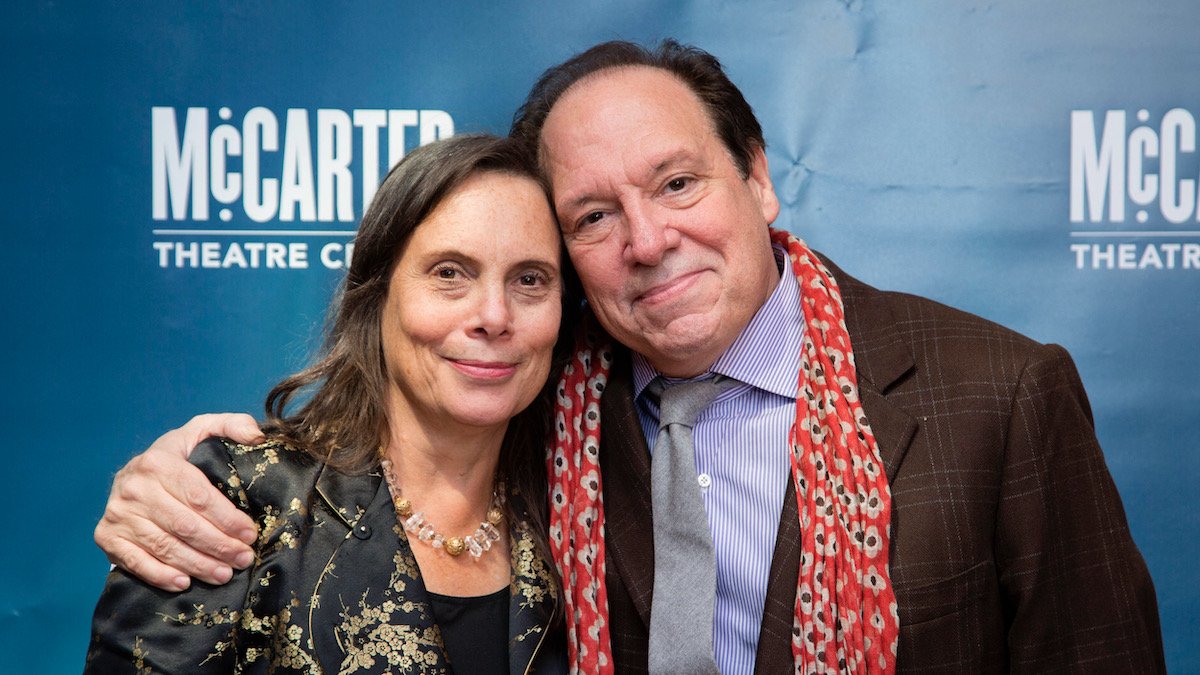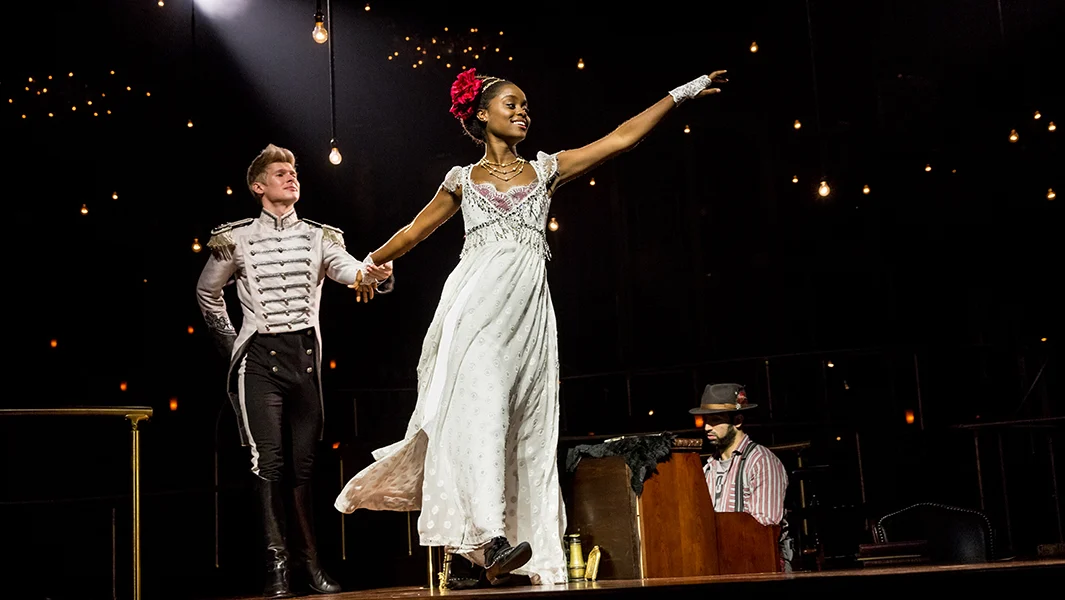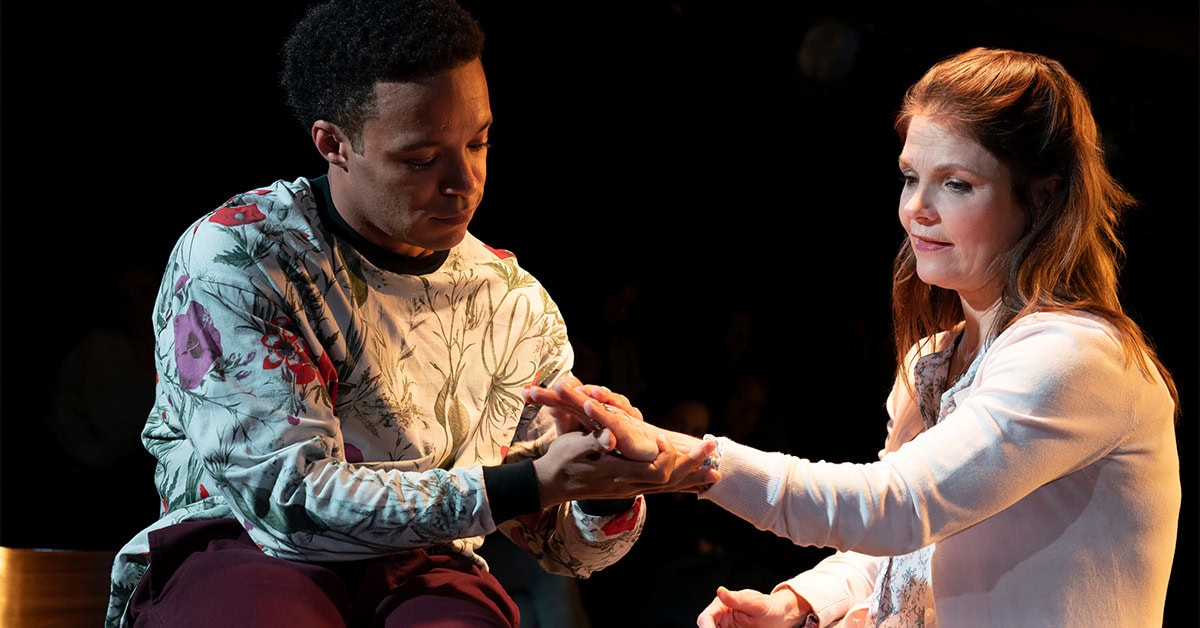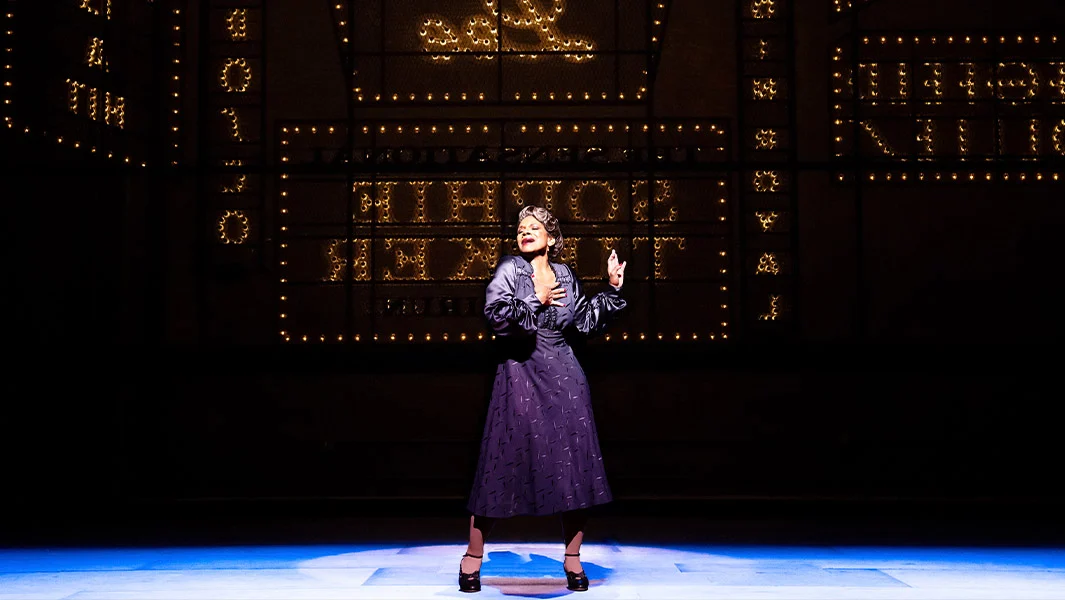
Fans of Agatha Christie’s Hercule Poirot have long wished to see more plays starring the Belgian detective. (For the reasons why, see the essay “Waiting for Poirot.”) Now, thanks to the acclaimed playwright Ken Ludwig, there’s a new stage adaptation of one of Poirot’s most famous cases: Agatha Christie’s Murder on the Orient Express. Ludwig and Emily Mann, the original production’s director from McCarter Theatre, came together to chat about the development and premiere of the stage play.
First, a little background on our two artists. Ken Ludwig is a two-time Olivier Award-winning playwright who has written over 28 plays and musicals, including 6 shows on Broadway and 7 in London’s West End. His best-known works include Lend Me A Tenor, which won two Tony Awards, Crazy For You, Moon Over Buffalo, Twentieth Century, Baskerville, and The Game’s Afoot, which won the Edgar Award for Best Mystery. He has also written many adaptations of classic novels, including The Three Musketeers, Sherwood: The Adventures of Robin Hood, Treasure Island, a musical based on The Adventures of Tom Sawyer. His book How To Teach Your Children Shakespeare won the Falstaff Award for Best Shakespeare Book of the Year.
Emily Mann is a distinguished director, producer, and writer. She is currently the Artistic Director and Resident Playwright at McCarter Theatre Center in Princeton, New Jersey. Emily won a Tony for producing Christopher Durang’s Vanya and Sonia and Masha and Spike and has been nominated for five more Tonys for her work in Having Our Say, Electra, Translations, and the Pulitzer-winning Anna in the Tropics. Her many additional awards include a Peabody, a Christopher Award, a Guggenheim Fellowship, and eight Obies.
Ludwig and Mann combined their considerable talents to Murder on the Orient Express in early 2017. The project began when Ludwig’s agent received a call from Agatha Christie Ltd., who explained that since Christie’s work hadn’t been adapted for the stage in decades, they were hoping Ludwig would be interested in dramatizing one. Ludwig swiftly agreed, having grown up reading – and loving – Christie’s books. For the adaptation, there was no question as to which story he would take on. He would go with the book that he considered the best – Murder on the Orient Express.
Once Ludwig finished crafting his script, he called Mann, with whom he had been colleagues and the best of friends with for years. “Ken gave me many gifts in my life, but this may be the greatest one,” Mann declared, saying she was thrilled to get the script and that it was breathtaking to read. Ludwig, meanwhile, gave high praise for how Mann develops characters through her directing.
“Emily is able to magically dig into characters and keep the joy of the piece going,” Ludwig explains, naming her one of the greatest theatre geniuses in America. Mann attributes their collaborative success to the trust and friendship between them. Ludwig enthused about how much he enjoyed the production, declaring, “Emily let the romance and the adventure shine through.”
Like Ludwig, Mann is a longtime fan of Agatha Christie, and she is very fond of the 1974 film adaptation of Murder on the Orient Express starring Albert Finney. When working on the development process, Mann wanted to “construct a piece like a musical… infused with humor and playfulness.” This was especially tricky since she believes that Murder on the Orient Express has become a part of the general culture, and great care must be taken when adapting legendary source material.
As he adapted the story for the stage, Ludwig pared down the enormous cast and kept Poirot at the center of the action. When asked to pick a favorite suspect, Mann couldn’t select just one. “There’s an amazingly interesting villain… many extremely moving scenes… I do love the Countess.” Ludwig went on to note that the Princess and the Countess were favorites, and Greta Ohlsson, the Swedish missionary was very funny. The goal was to give the audience two hours with “glamorous, interesting people.”
Bringing Poirot to the stage was a special challenge. Mann made sure that the actor was not doing an impersonation, but instead was inhabiting the role. She believes that Poirot is “not just the mustache or the suit… the mind of Poirot is what’s most interesting… he has great wit, a quick mind, a great sense of humor… timing is everything. He’s set on solving the problem and can never let that obsession leave him.”
When crafting a false mustache for the actor playing Poirot to wear, Mann and Ludwig wanted to make sure it was perfect and hired the best people to design it. Ludwig didn’t want the facial hair to be too big, but he wanted it to reflect Poirot’s fastidiousness. The mustache was even redesigned between the Princeton and Hartford productions to insure its impeccable condition. But despite all the care and attention to detail, the mustache did not always behave as it should, and in fact, it fell off on stage during one performance in Hartford as a result of a makeup misapplication.
During rehearsals, the cast also engaged in a very special lesson in method acting. On the second day of tech, a terrible blizzard caused some members of the cast to ask if the theatre would be shut down due to weather. Mann, who worked in Minnesota for five years, insisted that rehearsals continue and that working in a blizzard would give the cast an opportunity to live through a situation comparable to the circumstances in the play.
Ludwig and Mann also had high praise for the creative team behind the production. William Ivey Long designed the original costumes (6 Tony wins for Nine, Crazy for You, The Producers, Hairspray, Grey Gardens, and Rodgers & Hammerstein’s Cinderella, plus 11 additional nominations) and caused the cast to jump with excitement at their glamour.
The original scenic design by Beowulf Boritt (Tony winner for Act One, with two additional nominations) and the lighting design by Ken Billington (Tony winner for Chicago, with eight additional nominations) were lauded as well. Ludwig was well aware of the difficulties in placing a train on stage, but Boritt developed a “brilliant, moving set [that] kept the train alive,” allowing the cars to move between scenes. Ludwig hastened to add, however, that such an elaborate set is not necessary in order to make the production work. “In fact,” added Ludwig, “I can imagine a production with almost no set at all, letting the story and the dialogue carry all the weight.”
When asked what their other favorite Christie stories are, Ludwig cited The Body in the Library, praising its memorable opening with the discovery of a strange beautiful woman found murdered in a mansion and the household inhabitants’ response to this disturbing development. Mann similarly adores Miss Marple, and also considers And Then There Were None “a chilling read.” Ludwig notes that Christie always manages to surprise the reader with an unexpected ending.
The audience members attending Murder on the Orient Express were similarly taken aback by the solution to the mystery, with gasps of surprise audible during every performance’s summation scene. The play opened around the time of the release of Kenneth Branagh’s movie remake of Murder on the Orient Express, and Ludwig wondered if it would affect the audience’s response, but found that by far, most of the audience didn’t know the solution. Mann agreed, noting that audience members tended to know the title, but not whodunit.
The initial run was “one of the most successful plays in my thirty years at McCarter,” Mann observed, with record business and audiences raving about the production, from the script to the performances to the artistic and technical aspects of the show. The show’s performances were held in the Matthews, the largest house at the McCarter Theatre complex, selling out over 1,000 seats every night of the run. “Ken outdid himself,” Mann declared, “Murder on the Orient Express is one of our greatest triumphs.”
…
To purchase your copy of Agatha Christie’s Murder on the Orient Express, click here. For performance rights, click here.
photo: John Baer

College Theatre: Picks for Your 2025/26 Season

Unlikely Friendships in Plays

